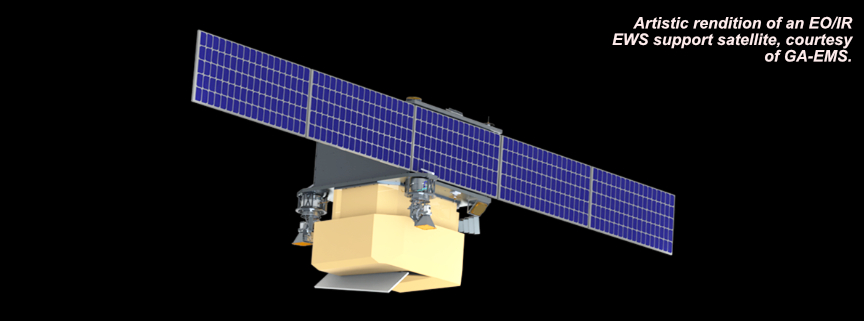
General Atomics Electromagnetic Systems (GA-EMS) has been awarded a contract modification by the United States Space Force’s Space Systems Command to help alleviate on-orbit risks for the Government through the delivery of a second weather satellite— the contract also calls for three years of operations service for each of the two satellites to support the Electro-Optical Infrared (EO/IR) Weather System (EWS).

This award modifies the current GA-EMS contract to design and deliver an operational EWS spacecraft with integrated EO/IR payloads to support the transition of the USSF’s aging Defense Meteorological Support Program (DMSP) on-orbit systems to a new generation of affordable, high performance, small weather satellites.
As the prime contractor, GA-EMS is responsible for the spacecraft bus and EO/IR payload design development, build, Assembly, Integration and Test (AIT), and has assembled a highly experienced, best-in-class team to deliver the EWS satellites. The team includes Atmospheric and Environmental Research (AER) Inc. for weather product expertise, and Parsons Corporation (NYSE:PSN) to provide Enterprise Ground Station command and control and operations support.
“This contract is a testament to GA-EMS’ ability to design and deliver advanced EWS satellites that will provide timely, accurate weather data to support Department of Defense operations across all domains,” said Scott Forney, president of GA-EMS. “We are currently working toward the delivery of the first EWS satellite and associated ground systems, with spacecraft build and EO/IR payload testing well underway. We are excited to begin the build and integration of a second EWS satellite to help support USSF efforts to extend EO/IR data collection capabilities as legacy DMSP satellites are retired.”
“From our initial 2020 contract award to develop an EWS satellite design to today’s contract modification to deliver two EWS satellites and on-orbit operations services, our team continues to make excellent progress toward meeting EWS mission requirements,” said Gregg Burgess, vice president of GA-EMS Space Systems. “After decades of providing exemplary weather support to military operations and the nation, DMSP is sunsetting. It is imperative that modern, advanced EO/IR weather satellites enter service to ensure accurate, uninterrupted weather data affecting daily operations, mission planning, and intelligence gathering reaches military decision-makers in a timely manner. We look forward to delivering our exquisite solutions for on-orbit weather data collection, high-resolution weather imagery and environmental monitoring data products that will help keep our warfighters on the cutting edge of mission overmatch.”
